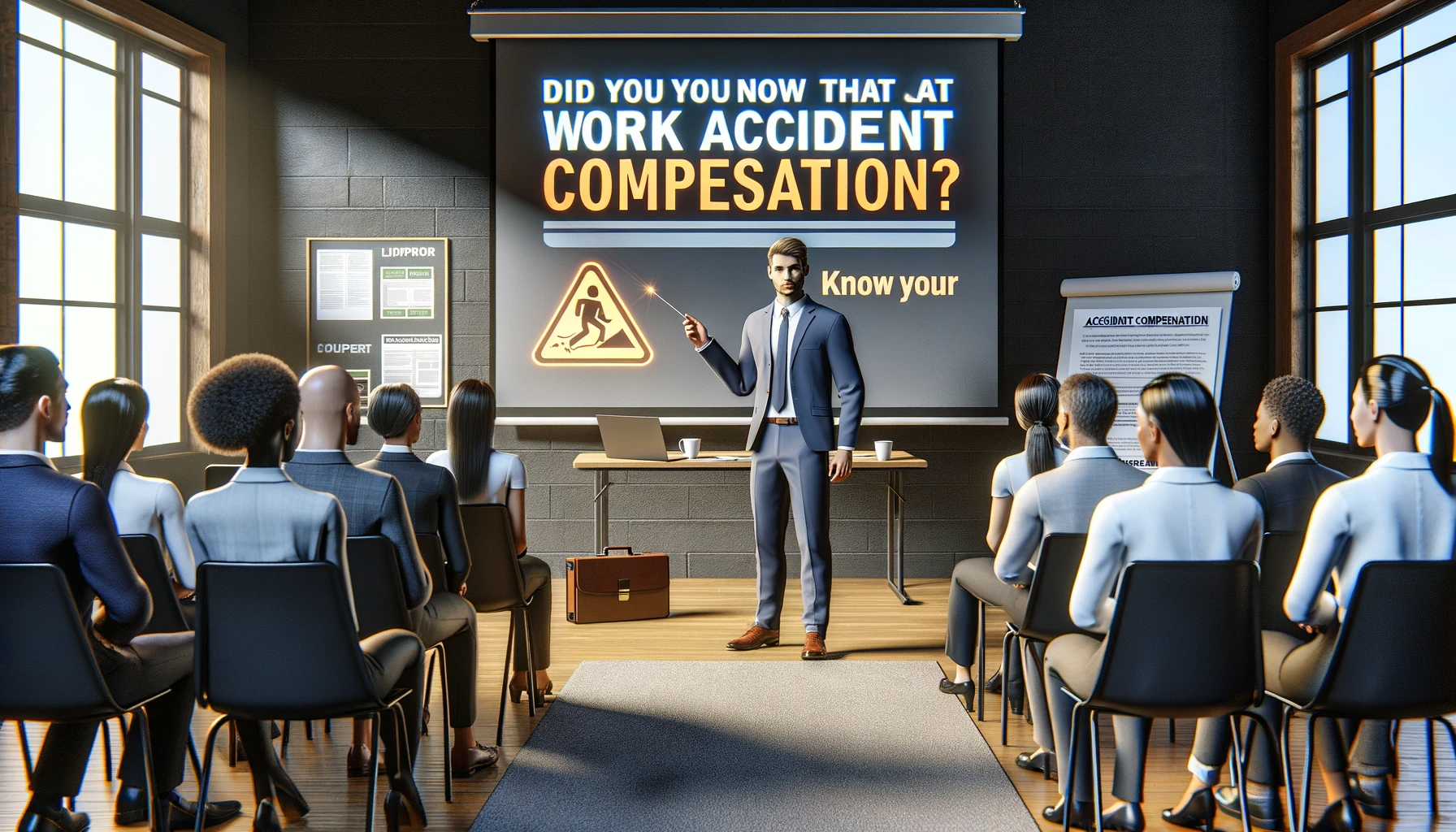Workplace accidents can happen anywhere, but in a bustling state like California, where industries range from high-tech offices to construction sites, the risk of on-the-job injuries can be especially varied. Whether you're tapping away at a keyboard or maneuvering heavy machinery, understanding how to navigate your work environment safely is crucial. So, how do you sidestep those unwelcome mishaps and ensure a safe and sound workday?


Understanding California OSHA Regulations
Let's kick things off with the legal stuff—California's workplace safety laws. The Golden State operates under its own set of rules known as Cal/OSHA regulations, which are designed to be at least as stringent as federal standards. Staying on top of these can be a game-changer in preventing job injuries. They cover everything from the correct usage of ladders to the nitty-gritty of chemical safety. Knowing these rules isn't just smart; it's your right and responsibility. California's commitment to workplace safety is evident in its comprehensive Cal/OSHA regulations. These regulations are designed to protect workers from a wide range of hazards, ensuring that every worker can return home safely at the end of the day. By understanding and adhering to these regulations, you not only protect yourself but also contribute to a safer working environment for all.
Workplace Safety Tips California
Now, for some good old-fashioned advice. Avoiding workplace incidents is often a matter of common sense—like keeping walkways clear to prevent those pesky slips and falls. But it's also about fostering safe work practices. This means double-checking that equipment is in shipshape before use and reporting any concerns pronto. Remember, a safe day at work is a collective effort. In addition to common sense, there are practical steps you can take to enhance workplace safety. Simple actions like maintaining clean and organized workspaces, promptly reporting any damaged equipment, and proactively addressing potential hazards can significantly reduce the risk of accidents. Workplace safety is a shared responsibility, and your diligence plays a crucial role in keeping your workplace accident-free.Risk Management in the Workplace
Risk assessment might sound dull, but it's your invisible shield against workplace dangers. Identifying potential hazards and cooking up some solid injury prevention strategies can save you a world of hurt. Think of it as your personal safety net, tailored to catch you and your coworkers should things go south. Risk management isn't about being overly cautious; it's about being proactive and prepared. Conducting regular risk assessments allows you to anticipate potential hazards and take preventive measures. From identifying slippery surfaces to addressing electrical safety concerns, risk management ensures that you're always one step ahead, minimizing the likelihood of accidents.Employee Safety Measures
Safety isn't a solo sport. It's about looking out for each other, and that's where employee safety measures come into play. Regular drills, knowing the ins and outs of PPE, and having an eagle eye for anything amiss is your team's defense against the unexpected. And hey, who doesn't like feeling like part of a superhero squad? In the world of workplace safety, collaboration is key. Employee safety measures encompass a wide range of activities, from participating in emergency drills to maintaining a vigilant eye for potential hazards. By actively engaging in these safety measures, you contribute to a workplace culture where safety is everyone's responsibility, and accidents become increasingly rare.
Ergonomic Safety in the Office
Office warriors, listen up! Your chair-and-desk setup can be a battlefield for your body if not managed right. Ergonomic safety is about making your workspace work for you. Adjust that monitor, invest in a supportive chair, and take frequent breaks to stretch. Your back will thank you, and your productivity might just get a boost too. Ergonomic safety isn't just about comfort; it's about productivity and well-being. Your office setup can have a significant impact on your health, from reducing the risk of repetitive strain injuries to improving your overall comfort and focus. Taking the time to adjust your workspace to ergonomic standards pays off in terms of both health and efficiency.Construction Site Safety California
For those of you on the construction front, you know the drill. Hard hats, steel-toed boots, and reflective vests are just the start. It's about staying sharp and aware, whether you're high up on scaffolding or trenching down below. Remember, cutting corners on a construction site is like playing with fire—literally. Construction site safety is a complex but vital aspect of workplace safety. From wearing the right personal protective equipment (PPE) to adhering to rigorous safety protocols, construction workers must remain vigilant at all times. A focus on safety not only protects individual workers but also ensures that construction projects are completed efficiently and without costly accidents.Industrial Accident Prevention
In the world of whirring machines and conveyor belts, industrial accident prevention is your golden ticket to a safe shift. Regular maintenance checks and clear safety signage can make all the difference. And let's not forget about proper training—it's the backbone of occupational hazard prevention in CA. Industrial accident prevention is a comprehensive endeavor that involves equipment maintenance, safety signage, and employee training. Regular inspections and maintenance checks ensure that machinery operates safely, while clear signage communicates potential hazards. Proper training equips employees with the knowledge and skills necessary to navigate industrial environments safely, reducing the risk of accidents and injuries.Safety Training for Employees
Speaking of training, let's not underestimate its power. Knowing how to handle a workplace emergency can be as crucial as the emergency itself. And regular refreshers? They're the secret sauce to keeping those protocols top of mind. Safety training is an investment in both individual and collective safety. It equips employees with the skills and knowledge needed to respond effectively to emergencies, from first aid techniques to evacuation procedures. Regular training refreshers ensure that safety protocols remain ingrained in the minds of employees, making the workplace a safer environment for all.Promoting a Culture of Safety
Last but not least, a culture of safety is the cherry on top of the workplace wellness sundae. It's about more than rules and regulations; it's about creating an environment where safety is as natural as your morning coffee. When everyone's in on it, from the newest intern to the CEO, you've got a recipe for success. Promoting a culture of safety goes beyond compliance with regulations; it's about fostering a mindset where safety is a core value. When every member of the organization, regardless of their role, prioritizes safety, accidents become rare occurrences. It's a collective effort that starts with leadership setting an example and trickles down to every employee, creating a workplace where safety is not just a priority but a way of life.Conclusion
In the end, avoiding a workplace accident in California is about combining knowledge with action. It's about taking those workplace safety tips, mixing them with a dash of common sense, and sprinkling in a generous helping of teamwork. Stay safe out there, California!Look for an attorney who has the right legal resources for your legal needs.
Contact us here on the Warmuth Law website or through our hotline 888-517-9888.











